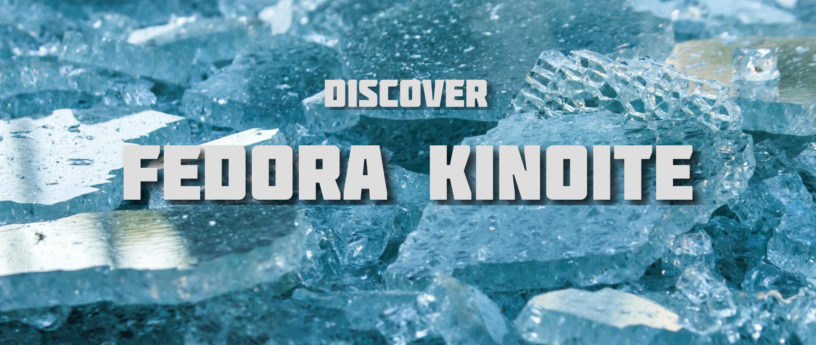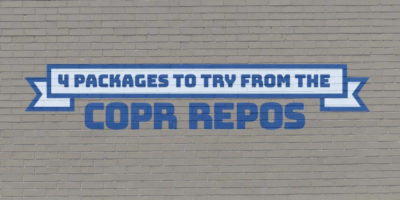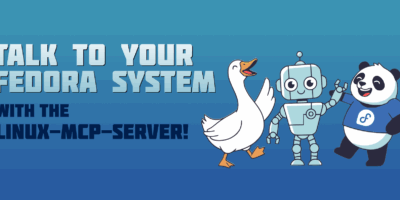Fedora Kinoite is an immutable desktop operating system featuring the KDE Plasma desktop. In short, Fedora Kinoite is like Fedora Silverblue but with KDE instead of GNOME. It is an emerging variant of Fedora, based on the same technologies as Fedora Silverblue (rpm-ostree, Flatpak, podman) and created exclusively from official RPM packages from Fedora.
Fedora Kinoite is like Silverblue, but what is Silverblue?
From the Fedora Silverblue documentation:
Fedora Silverblue is an immutable desktop operating system. It aims to be extremely stable and reliable. It also aims to be an excellent platform for developers and for those using container-focused workflows.
For more details about what makes Fedora Silverblue interesting, read the “What is Fedora Silverblue?” article previously published on Fedora Magazine. Everything in that article also applies to Fedora Kinoite.
Fedora Kinoite status
Kinoite is not yet an official emerging edition of Fedora. But this is in progress and currently planned for Fedora 35. However, it is already usable! Join us if you want to help.
Kinoite is made from the same packages that are available in the Fedora repositories and that go into the classic Fedora KDE Plasma Spin, so it is as functional and stable as classic Fedora. I’m also “eating my own dog food” as it is the only OS installed on the laptop that I am currently using to write this article.
However, be aware that Kinoite does not currently have graphical support for updates. You will need to be confortable with using the command line to manage updates, install Flatpaks, or overlay packages with rpm-ostree.
How to try Fedora Kinoite
As Kinoite is not yet an official Fedora edition, there is not a dedicated installer for it for now. To get started, install Silverblue and switch to Kinoite with the following commands:
# Add the temporary unofficial Kinoite remote $ curl -O https://tim.siosm.fr/downloads/siosm_gpg.pub $ sudo ostree remote add kinoite https://siosm.fr/kinoite/ --gpg-import siosm_gpg.pub # Optional, only if you want to keep Silverblue available $ sudo ostree admin pin 0 # Switch to Kinoite $ sudo rpm-ostree rebase kinoite:fedora/33/x86_64/kinoite # Reboot $ sudo systemctl reboot
How to keep it up-to-date
Kinoite does not yet have graphical support for updates in Discover. Work is in progress to teach Discover how to manage an rpm-ostree system. Flatpak management mostly works with Discover but the command line is still the best option for now.
To update the system, use:
$ rpm-ostree update
To update Flatpaks, use:
$ flatpak update
Status of KDE Apps Flatpaks
Just like Fedora Silverblue, Fedora Kinoite focuses on applications delivered as Flatpaks. Some non KDE applications are available in the Fedora Flatpak registry, but until this selection is expanded with KDE ones, your best bet is to look for them in Flathub (see all KDE Apps on Flathub). Be aware that applications on Flathub may include non-free or proprietary software. The KDE SIG is working on packaging KDE Apps as Fedora provided Flatpaks but this is not ready yet.
Submitting bug reports
Report issues in the Fedora KDE SIG issue tracker or in the discussion thread at discussion.fedoraproject.org.
Other desktop variants
Although this project started with KDE, I have also already created variants for XFCE, Mate, Deepin, Pantheon, and LXQt. They are currently available from the same remote as Kinoite. Note that they will remain unofficial until someone steps up to maintain them officially in Fedora.
I have also created an additional smaller Base variant without any desktop environment. This allows you to overlay the lightweight window manager of your choice (i3, Sway, etc.). The same caveats as the ones for other desktop environments apply (currently unofficial and will need a maintainer).






Lyes Saadi
Thank you so much for this work!
I’ve used Kinoite quite a long time recently, and a lot of its variant, and I can say that it is indeed extremely stable and a great system overall!
Having it recognized as a Fedora Edition and supported by Fedora’s infrastructure is great news!
I hope that one day, each spin gets its Silverblue edition!
Landon Jobe
Nice to see a KDE variant – not much of a fan of Gnome. I’ll be sure to give it a spin. Not too big of a fan of the name, though. My hope is it’s just a codename.
hammerhead corvette
I have seen many a post on the forums about this build and was interested in it then. Glad to see it will be official in F35. Congrats to you Timothee ! I’ll give it another try when it’s official.
Sebastiaan Franken
Nice, good to see this type of technology being tested on a wider base. Just one question; how do you pronounce “kinoite”?
Timothée Ravier
You have two options as we have not yet settled on one: the English one or the Japanese one. You can use Google translate to get an idea.
Christian Groove
It is not clear to me, why i should use Silverblue or Kinoite. F33 is a wonderful maintained distribution that provides everything i need.
Tim Gordon
I tried Silverblue earlier this week and I am never going back to normal Fedora.
The immutability, delta upgrades, being able to simply rollback to a previous image in GRUB – are simply phenomenal once you get used to it.
My advice: simply try it – it takes minutes to install.
hammerhead corvette
Kiniote is a KDE spin of Fedora. Silverblue is an Atomic version of Fedora.
Me
Please stop making up new names. One very nice thing about Fedora is it’s spins.
Why not go with that existing convention and call this Silverblue KDE spin?
The ecosystem is confusing enough.
You
I agree with that. I see no need for this project to have another name. The Silverblue KDE spin would be a lot easier to understand from the first sight what it is.
Czocher
I understand your concern but your opinion is based on missing information. Kionite in fact had to be called “Kionite” and not “Fedora Silverblue KDE spin” because it started as an unofficial single-person project, not as part of the Fedora ecosystem.
Since the Fedora project wants to adopt Kionite and make it official they probably will rename it to “Silverblue KDE spin”, which will partially solve the confusion you’re experiencing.
Joe Pesco
Thanks for the article!
Roberto
How I can help with the i3 – sway spins?
Czocher
Take a look at the kionite repository (available online). Recreating something similar for any environment requires a bit of analysis but is not impossible. Good luck!
russ baker
Have Kinoite on a sff 1.6GHz cpu. It is clean, works good, and cli is a click away. Nothing overly new here, just like it.
Géraud
If anyone in interested in a simple, yet practical way of installing Silverblue alongside other Linux distributions and was a bit pushed back by the documentation, here is a simple partition scheme that works nice for testing purposes:
– your usual EFI partition as mount target
– one ~1GB btrfs partition as
– one +20GB LMV2 volume group with a single volume, the latter as mount target
(root)
Géraud
PS: the Plasma download required for the switch is ~400MB, so bear that in mind when planning for the install.
claudiusraphael
Do you run a tracker for the releases? I’d like to have a simple way to get into knowledge what “releases” are made available on your (or another given) site. /[wget –spider ?]
Oh and: Does ostree allow and support name-/label-/tag–based pins? Is there a directory/tree of the installed rebases?
3rd and last question – the “base”-version you provide, i assume is based on X11/XORG, right? Do you have a most basic setup for Wayland, too?
Timothée Ravier
I don’t have anything specific set up to list the currently available versions.
With ostree you can pin any local deployment but not a ref name.
The base version has X11 and XWayland by default and you can overlay any Wayland DE you might like.